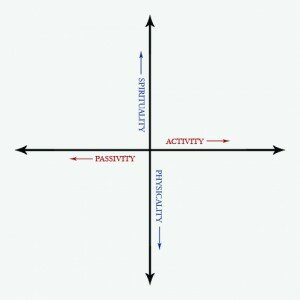As yoga has become more popular in the West there has been widespread discussion and debate as to what exactly yoga is. Recently, two parents in Encinitas, California, filed a lawsuit against the Encinitas Public School District in regards to their children being taught Ashtanga Yoga in school. This has raised an array of questions and opinions about yoga and its place in secular life, or lack thereof. To address this debate let us first address the fundamental question: what is yoga?
From my experience there seem to be two spectrums upon which people have this discussion. The first: is yoga a religion and a form of spirituality, or is yoga an exercise technique? The second: is yoga calm and relaxing, or is yoga rigorous and demanding? At the worst people will take particular positions at ends of these spectrums in an attempt to give a clear definition of yoga – at times, going so far as to say that what does not fit in their definition is not yoga. Others will say that yoga is the middle ground between the extremes, phrasing their parameters as negatives: yoga ought not to be too physical, nor too spiritual; yoga ought not to be too relaxed, nor too rigorous. But even this method misses the point.
Yoga is inclusive, not exclusive. It incorporates the extremes. It is both intensely physical and intensely spiritual (opposing the age-old fallacy that the two are mutually exclusive), and both incredibly stress-reducing and strenuous. If you draw these spectra of human experience as a cartesian plane with an x-axis measuring the degree of activity/passivity and a y-axis measuring the degree of physicality/spirituality, yoga incorporates the entire system by being the study of both the origin (where the axes meet) and the sheet of paper upon which you are drawing. That is to say, yoga is the study of both the origin of human experience (existential first-principle, which yoga calls atman), and the medium of human experience (transcendent eternal-principle, which yoga calls brahman).
And so we get to the point: yoga is about God. For God is the creator, the origin, and God is that which transcends our individual lives. Yoga teaches us to know God by studying our experiences. With regards to our x-axis, Patanjali says, “sthira sukham asanam”1 – the posture for yoga (both figurative and, in physical practice, literal) should be strong and stable (active), and easy and relaxed (passive). With regards to our y-axis, Patanjali says, “abhyasa vairagyabhyam tat nirodhah”[2. Patanjali’s Yoga Sutras, 1.12] – we can do yoga by being both detached (spiritual), and established in consistent practice (worldly/physical). Patanjali teaches us to cultivate these horizontal and vertical qualities by beginning with four active limbs regarding our physicality and the way we live in the external world (yama, niyama, asana, pranayama), and continuing with four passive limbs regarding our spirituality and the way we live in our internal world (pratyahara, dharana, dhyana, samadhi).[3. It should be noted that to divide the limbs of yoga into active and passive practices, while having merit, is an oversimplification of the system and of the inter-relationships of the limbs. To begin to understand the subtleties of the eight limbs, one must practice and study the eight limbs.]
So, should yoga be allowed in public, secular education? So long as the separation of church and state is taken to mean that God has no place in public life, and so long as the word secular is used to describe the absence of the presence and purpose of God, then there is no way for Yoga to be taught in public, secular systems. But is this the purpose of our separation of church and state? I don’t believe so. The division is meant to protect public spaces and public affairs from conflicts that may arise from opposing religious perspectives, and to promote harmony amongst diversity. At its best, it facilitates mutual respect based upon a recognition of what is universal, what is human. And where there is humanity, there is God.
To divide church and state, or in this case, private home and public school in this proper, human way, demands that we change the relationship between the two. Our home (perhaps including a place of worship) must be a place where we learn a system of symbols for processing our knowledge and experiences. We must have a framework in which our experiences have meaning and value. This framework may include, but is not limited to, religious and cultural traditions. Our school, on the other hand, must be a place where we are provided with knowledge and experiences that are oriented towards existential consideration. No academic discipline is exempt from asking us what it means to be a human being.
Yoga is a human practice. While it has developed through a Hindu framework, yoga is not limited to application within Hinduism. The practice is designed to give us experiences that demand existential consideration, and which can then be articulated only through a framework of symbols and analogy, which we often call religion. For this reason I was initially surprised to learn that the suit filed by the Encinitas parents was backed by a Christian defense organization. The teaching of yoga provides experience which initiates religious contemplation and strengthens faith, which can be beneficial to all forms of worship.
Not only does yoga have a place in public education, but the rest of the education system can learn from the teachings of yoga. The eight limbs of Ashtanga Yoga are structured so intelligently and build on each other so beautifully that existential consideration, and subsequently virtues such as intelligence, harmony, patience, courage, etc., are fostered. All disciplines ought to be oriented in this way, to encourage humanity in human beings. Paired with a healthy and supple system of symbols in the private sphere of life, this would support a beautiful world for us to live in.
- Patanjali’s Yoga Sutras, 2.46 ↩

Please feel free to comment...